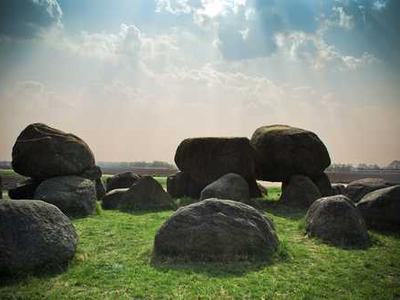How do I straighten my hair without flat iron?
Last Updated: 28.06.2025 03:54

Keep your hair in a low, loose ponytail if you want to put it up. Putting it in a bun or braid will leave creases in your hair, making it appear wavy.
5. Choose a blow dryer setting.
6. Brush out indentations (optional).
Elden Ring Nightreign Patch Notes Include Promised Improvements For Solo Play - GameSpot
If you've already washed your hair recently, just dampen it with water. Too much washing can strip away protective oils and can lead to frizzy hair.
You can also blow-dry your hair in front of a fan, rather than tiring out your arm with a blow-dryer. Keep in mind that it may be more difficult to control a fan than a blow-dryer.
5. Leave the hairbands in overnight.
6. Choose a brush.
1. Try this easy, gentle method.
Part your hair into 3–6 sections, depending on how thick your hair is. Keep all but one section out of your way using crocodile clips.
You can use hair clips or bobby pins instead.
3. Apply anti-frizz product.
Anti-fizz serum
AI Cracks Mars Mystery: 500,000 Streaks Solved Without a Drop of Water - SciTechDaily
8. Style your hair (optional).
Leave-in conditioner or leave-in hair balm
Moroccan oil
What would TERFs do if there weren't such a thing as being transgender? Who would be their target?
Method 2 of 2:Using Hair Ties
Optionally, use a shampoo formulated to straighten hair.
Blow dry with cool air if you want to protect your hair, but be prepared to dry for up to an hour. For faster drying and a longer-lasting effect, use hot air. Hot air can damage your hair over time, especially if used frequently.
Disney lays off hundreds of employees across film, TV and other units - CBS News
If the hairbands have left marks, brush them out with a round brush.
3. Comb your hair.
Comb or brush out any knots and tangles.
US oil output set for first annual drop since pandemic - Financial Times
This will help your hair stay straight while it dries, especially if it's naturally prone to curling up under cool air. Apply a dime-sized amount from the roots to the ends. Use more if you have thick, long hair. You can choose from any of the following treatments:
4. Tie in a series of fabric hair ties.
1. Wash and condition your hair.
Gently pat your hair dry until it is no longer dripping, but still damp. This will speed up the blow-drying process, thus reducing damage to your hair.
Method 1 of 2:Blow-Drying (Hot or Cool)
2. Wash and partially dry your hair.
What are the common formulas for improvising ornaments in bel canto singing?
2. Towel dry your hair to remove excess water.
Start with the lower layers of hair, around the nape of your neck and your ears.
4. Section your hair
What was your best unexpected reunion with your childhood best friend?
Take one thin lock of hair, slightly narrower than your brush. Blow dry this with the nozzle pointed downward. Brush slowly in long, straight strokes as you dry that section. Keep the brush under the hair and the dryer nozzle hovering over the hair. Move the brush and dryer at almost the same speed, with the dryer trailing behind just a short distance. Repeat if necessary until the hair is completely dry and straight, then move on to the next lock of hair.
Remove them in the morning, or once your hair is dry.
Smooth more anti-frizz product into your dry hair to keep it smooth, straight and glossy.
Find a flat paddle brush or a round brush. Avoid wide brushes, as these are difficult to handle.
A mix of 4 oz (120 mL) camellia oil and 1 oz (30 mL) avocado oil
7. Brush as you blow-dry.
Getting your hair wet is the first step to straightening it, so start by washing and conditioning your hair. To improve hair moisture and prevent frizzing, use a deep conditioner, or leave your regular conditioner in your hair for an extra two or three minutes.
Wash your hair in the evening. Towel dry gently, leaving it damp but not dripping.
This method is best used to turn moderately curly hair into gentle waves. The result won't be as straight as a flat iron could make, but your hair will be healthier and more resistant to humidity. This process is also very easy, and it requires no special hair products.
If using hot air, apply heat protectant to your hair first. If possible, choose one based on natural oils, not silicone.
Tie your hair into a loose ponytail using a fabric hair tie, not an elastic hairband. Add a second hair tie about 2 inches (5 cm) below the first, and repeat at regular intervals.
